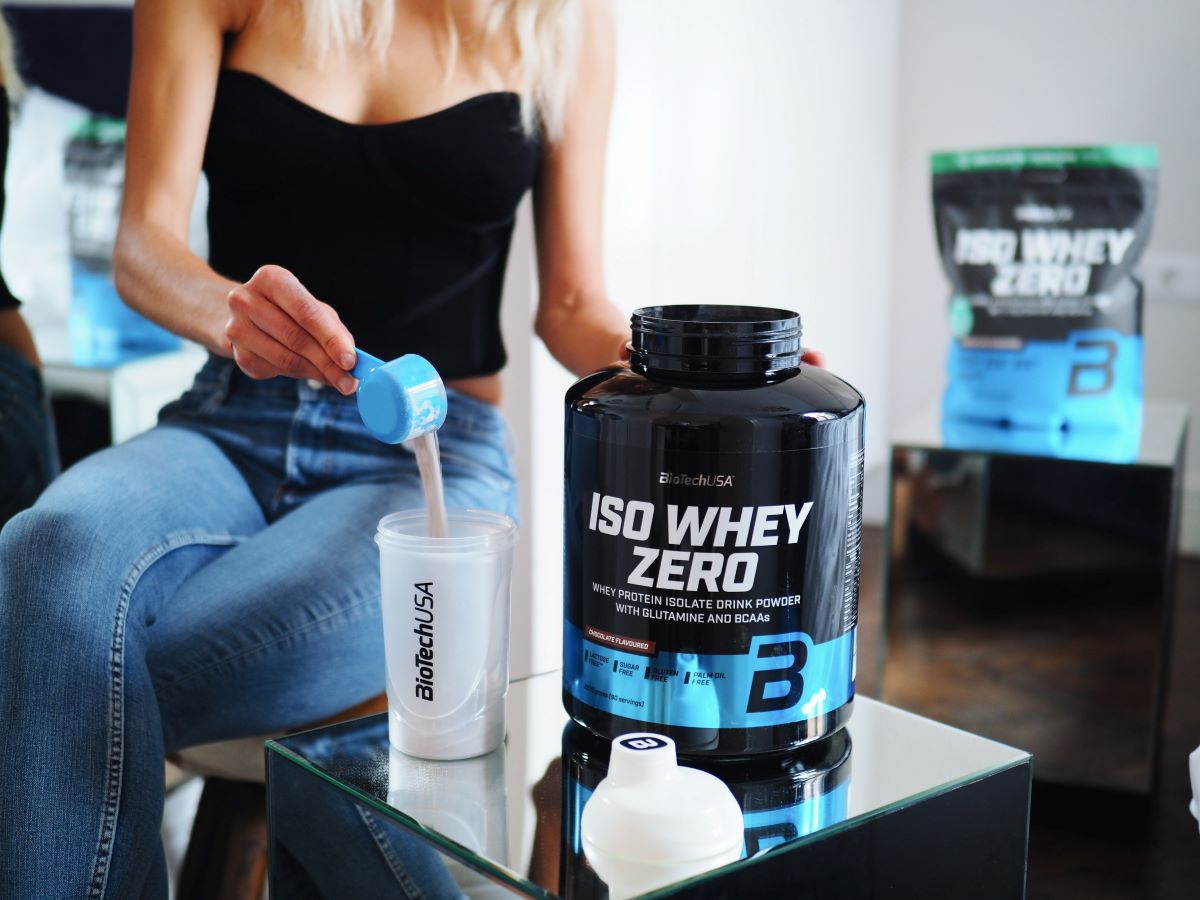
When is it recommended to take protein shake?
Weight loss – body fat reduction and muscle retention
During dieting and leaning protein intake is extremely important for the following reasons:
- protein saturates – since you are leaning, you might be suffering from hunger and any useful nutrient that gives you a sense of fullness is very important
- your body is trying to replenish the missing energy through amino acids that originate from the breaking down of muscles. It must be prevented, therefore the protein intake should be increased
- protein has a thermogenic effect
- your body is good at turning protein into a fat storage, so it is more probable that protein will be utilised to build muscles or as energy rather than as fat
What quantity should be taken during leaning?
The goal is to take 1.8–2.5 g protein per kg (in body weight). You may cover 40–50% of the total calorie intake from proteins, but you should pay attention that the majority of this would come from solid sources such as chicken breast, turkey breast, sea dish, egg white etc.
Bulking – how to grow muscle mass with a minimum fat increase
Although you don’t need to take in as much protein during bulking as you do during leaning, it is still extremely important to take in an adequate amount that is required for building muscles.
Protein should be taken with the right quantity and quality of carbohydrate for maximum utilisation. It is recommended to take it in the form of mass gainers or Carbox added to whey proteins.
Protein is significantly better utilised because of the greater calorie intake.
How much protein is recommended for bulking?
If you want to increase muscle mass the required protein quantity is 1.4–2g per kg (in body weight)
The timing of the protein intake
Don’t waste time when it comes to protein intake. There are times when it is much more useful to take in protein than at some other times. But it is also important to know what kind of protein sources you should take and when.
What should we consume around the training time? Before or after workout?
The typical recommendation is to consume protein after workout. The fanatics will gulp down their well-deserved shake immediately after workout. At the same time you should pay attention that protein would always contain carbohydrates since the anabolic gate after workout serves for the replenishment of the glycogen reserves. It also helps the utilisation of protein. However, if you ensure a constant protein intake during the day from any protein sources (meat, dairy, eggs, shake), then it becomes practically irrelevant when you consume your shake. According to the latest research it is not absorbed more efficiency after workout when compared to any other time of the day. The only exception is if you go to your training on an empty stomach, because in this case protein consumed after workout is especially important.
For this reason, it is useful to consume protein in the morning when we are hungry after a longer time period without nutrient supply.
Before going to sleep the main aspects to take into consideration are the saturating effect and the nutrient content, since it is difficult for the body to turn protein into body fat. Therefore, it is utilised as energy or we use it to build muscles or for some other purposes, with little chance of causing any harm to the body. It is a delicious, valuable and saturating source of nutrient that can replace or complement dinner.
The speed of absorption
The fastest absorbing protein sources are hydrolysates, namely hydrolysed casein and hydrolysed whey. These are followed by whey isolate, whey protein concentrate, and the list ends with casein.
In terms of building muscles slow-absorbing proteins are not to be disregarded, but the fast-absorbing ones enhance protein synthesis to a greater extent.
After a typical workout or in the morning after waking up, it is recommended to consume the faster absorbing protein sources like Iso Whey Zero, and in the evening to choose the slower absorbing ones or to slow down their absorption with other nutrients – dairy products such as cottage cheese or ricotta.